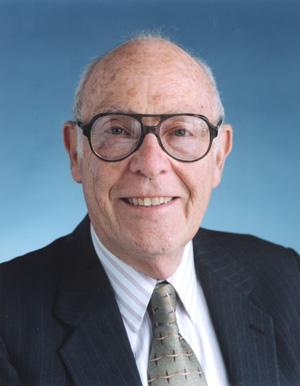
2002 Bower Science Award Theme: Materials Science
John W. Cahn received his B.S. in Chemistry in 1949 from the University of Michigan at Ann Arbor, and his Ph.D. in Physical Chemistry in 1953 from the University of California at Berkeley. He has received two honorary degrees: Sc.D. (hon.) from Northwestern University in 1990 and D. Hon. Causes, from the University Decry, France, 1996.
Cahn has had a profound influence on the course of materials and mathematics research during his forty-year career. The foremost authority on thermodynamics since J. Willard Gibbs, Cahn has applied the basic laws of thermodynamics to describe and predict a wide range of physical phenomena. Cahn is most widely known for his pioneering work on the thermodynamics and kinetics of phase transitions and diffusion, on interface phenomena, and for his discovery, along with Shechtman, Blech, and Gratias, of a solid with a quasiperiodic structure known as a "quasicrystal."
In his search for knowledge, Cahn has reached out to scientists in diverse fields and has stimulated them to work on a broad range of materials problems. The solutions to these problems have led directly to the creation of modern, multifunctional materials.
Cahn is a member of the National Academy of Sciences, National Academy of Engineering, and American Academy of Arts and Sciences, American Institute of Metallurgical Engineers, American Association for the Advancement of Science, Materials Research Society, and the Japan Institute of Metals. He is the recipient of the National Medal of Science in 1998, Harvey Prize from the Israel Institute of Technology, Rockwell Medal, Hume-Rothery Award, Michelson and Morley Prize, Sauveur Award, Von Hippel Award, Dickson Prize, S.B. Meyer Award.
Information as of April 2002

